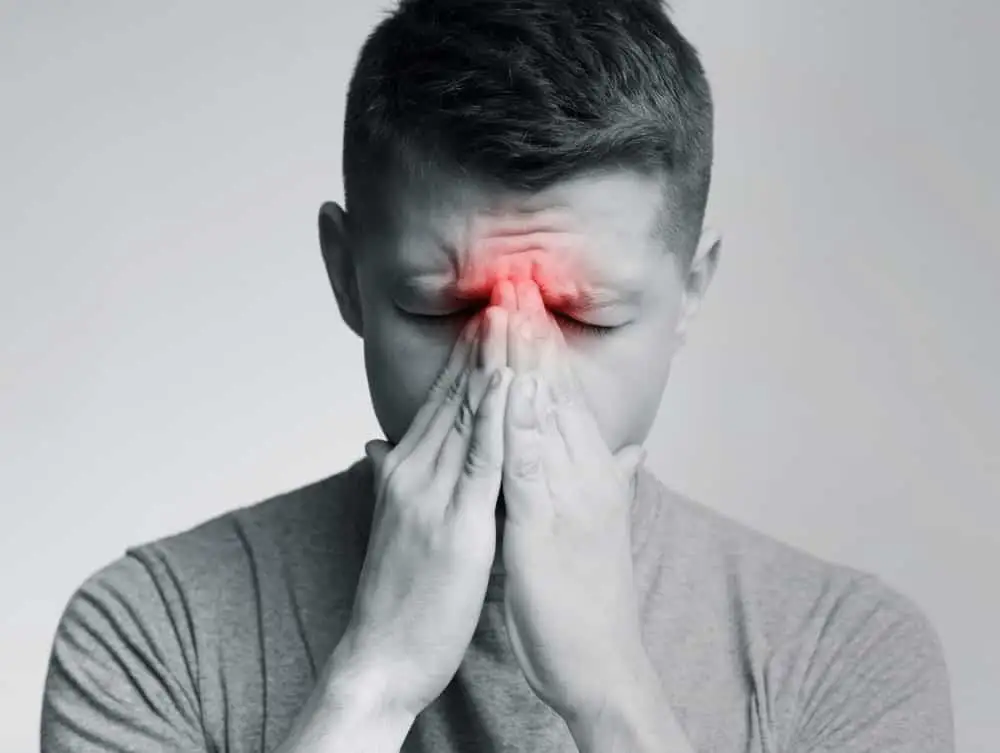The sound of screaming can be terrifying, especially if it’s coming from someone you love in the middle of the night. But when you rush to their side, you may find them fast asleep but distressed, sitting upright, ranting, and breathing heavily, which means they’re probably in the middle of a night terror.
Despite the alarming name, night terrors are usually harmless. The person is highly unlikely to remember them, and the biggest risk is them injuring themselves while sleepwalking, which can be handled by guiding them back to bed.
What Are Night Terrors?
Night terrors are periods of extreme agitation during sleep, which may include screaming, thrashing, fast breathing, and sleepwalking, among other things. They are a type of parasomnia—a sleep disorder with undesirable events that disrupt your sleep—and can occur in both children and adults. They happen in about 3% to 6% of children between two and 12 years old, and 2% of adults.
Someone who is experiencing a night terror may do the following:
- Scream, shout, or talk. A scream often signifies the start of a night terror.
- Sleepwalk, including bolting upright, walking around the room, or even running
- Open their eyes and stare blankly. They are unlikely to recognise you because they’re asleep.
- Talk gibberish
- Sweat profusely
- Breathe heavily
Flail Or Thrash Around
Night terrors usually last for about 10 to 15 minutes, before stopping by themselves. They happen during the changeover from deep sleep (also called “slow wave” or delta sleep) to rapid eye movement (REM) sleep.
If your child or partner is having a night terror, it may seem like they’re going through a horrible experience, but because their brain’s neurons are in an unconscious “down state,” they are extremely unlikely to remember what has happened. Waking them up won’t help—they’ll be disorientated and confused, and still won’t remember the night terror. They might also struggle to go back to sleep.
What Causes Night Terrors?
Night terrors happen when the central nervous system is over-aroused, leading to an intense fear reaction. All types of parasomnia (e.g. sleepwalking, bedwetting, teeth grinding) are hereditary, so if you’ve experienced them, it’s more likely that your children or siblings will.
They are also caused by a number of environmental factors. In kids, night terrors are more common when they are:
- Exhausted
- Unwell
- Stressed
- Experiencing separation anxiety
- In a new environment, such as a new family home
- Have drank too many caffeinated soft drinks
In adults, sleep terrors are more common when they are:
- Depressed
- Anxious
- Stressed
- Have bipolar disorder
- Have PTSD or another type of ongoing trauma
- Have sleep apnea
- Have gastroesophageal reflux
Sleep terrors may also be more prevalent in people who:
- Have restless leg syndrome
- Are sleep deprived
- Are taking certain medications
- Drink or abuse alcohol
- Have migraines
There isn’t any convincing evidence to suggest that certain foods can cause night terrors. They are also not linked to any psychological problems or disorders.
Night terrors vs nightmares
Nightmares happen during REM sleep—the period of sleep when you dream more frequently, usually in the second half of the night. Night terrors happen during the transition from deep sleep to REM sleep, where little to nothing is remembered. They happen more frequently in the first few hours of sleep, when deep sleep occurs. For this reason, nightmares are more frightening than night terrors, but night terrors are often accompanied by sleepwalking, which can lead to the person injuring themselves. This makes them more dangerous, so it’s important to keep an eye on someone who is having a night terror, and try to guide them back to bed if they are walking around.
If your child wakes up in the middle of the night and remembers their dream, it’s highly likely that they’ve had a nightmare. If they show some of the night terror signs described above, like screaming, thrashing, or sleepwalking, but then fall back asleep afterwards, they are probably experiencing a night terror.
How To Deal With A Night Terror Episode
When dealing with someone who is having a night terror, your number one priority is to keep them safe. If they are thrashing around, remove nearby objects so they don’t smash or break anything. If they are sleepwalking, try to gently guide them back to bed. This can take some doing, but with persistence, they should eventually relent. If your child is going through a period of night terrors, lock their windows and door, because they may try to unconsciously escape from the scary thing that is happening to them (even though they aren’t actually experiencing it).
Night terrors usually only last for about 10 minutes, so you’ll just need to keep an eye on them until the episode ends.
How To Stop Night Terrors
A child may have three or fewer night terrors, and they usually grow out of them as their nervous system develops. If your child is having night terrors that happen more than twice a week, or if they are in danger of hurting themselves, talk to your doctor. They may refer you to a sleep specialist who can advise you on how to deal with the issue.
One of the most effective ways to reduce the frequency of night terrors is by helping the person to get better quality sleep. If it’s happening to your child, create a consistent bedtime routine with the same sleeping and waking up times, and make sure they are getting enough sleep. Here’s a breakdown of how much sleep kids need:
- Toddlers (1 to 2 years): 11 to 14 hours
- Pre-schoolers (3 to 5 years): 10 to 13 hours
- Grade-schoolers: (6 to 12 years): 9 to 11 hours
If the problem is happening for an adult, the same applies. Encourage them to sleep and wake up at a similar time every night, and make sure they are getting at least eight hours sleep, or more if they feel tired throughout the day.
Other effective ways to improve sleep hygiene:
- Don’t use blue-light emitting devices an hour before bed. This includes phones, iPads, and televisions. These trick your brain into thinking that the sun is still up, which dampens your melatonin levels (the hormone that brings on sleep) and also keeps you mentally aroused.
- Limit caffeinated drinks, or try to cut them out completely. Caffeine accumulates in your body over time, and can take days (or even weeks) to break down. If your kids are drinking soft drinks, they will almost certainly be affecting the quality of their sleep, especially when consumed at night.
- Make sure the bedroom is nice and dark.
Stress is another factor that can increase the frequency of night terrors. Try to identify sources of stress for your child or partner, and figure out how to remove them.
Guide To Night Terrors—Summary
It can be distressing when someone who loves has a night terror. But they usually go away with time, especially if it’s your child. You can also help by improving the person’s sleep hygiene, while also improving their health at the same time—good quality sleep is crucial.
How To Fix Sinus Headaches | Symptoms, Treatments, Causes
Sinus headaches can be extremely painful, but they are often misdiagnosed for migraines or regular headaches, which have different treatment options. In this article, we explore exactly what a sinus headache is, what causes them, and provide some of the best treatment options so that you can get some relief from your pain. What Is…
What Is The Difference Between A Psychologist & Psychiatrist?
If you’re struggling with mental health issues, you may be considering getting professional help. And if that’s the case, you might be asking yourself “what is the difference between a psychologist and a psychiatrist?” The confusion is justified because the two are very similar. But they do have distinct differences. In this article, we explore…
Is Depression Caused By A Chemical Imbalance? Debunked
The human brain is a highly complex organ that contains about 86 billion nerve cells. These can make a possible 1,000 trillion unique connections, and the cells themselves can send pulses of electrical information at speeds of up to 400 kilometres per hour4. It’s truly an amazing organ that has rocketed us to the very…




